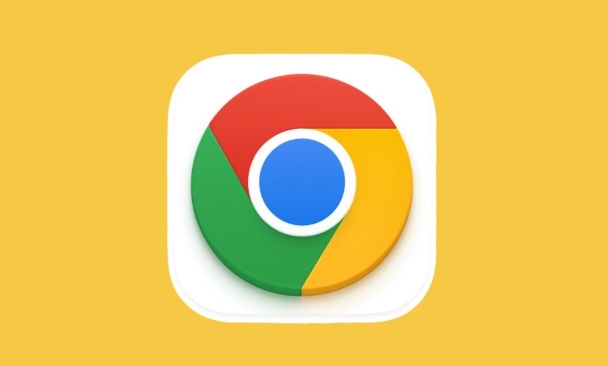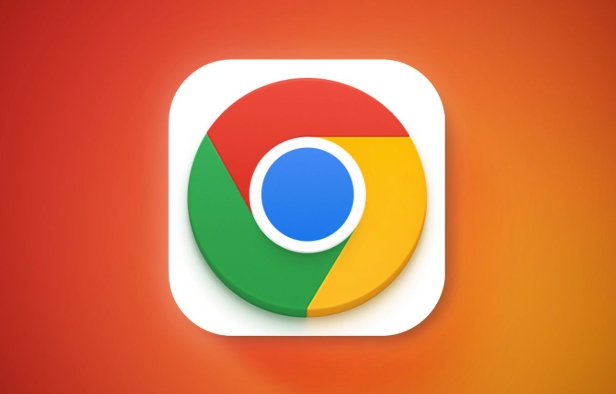How to use Chrome with a screen reader
Jul 14, 2025 am 12:40 AMUsing Chrome screen reader, you must first start the reader and then open the browser and master the navigation shortcuts. 1. First, start a screen reader such as NVDA or VoiceOver to ensure that Chrome is accessible when it is turned on; 2. Use Tab and Shift Tab to switch between interactive elements, and H/Shift H jumps to titles to improve browsing efficiency; 3. Use built-in Chrome functions such as Ctrl F to find text, Ctrl plus scaling pages and reading mode to simplify content; 4. If you encounter web compatibility issues, you can try refreshing the page or using the link title list to bypass obstacles. Persisting in practice will make the operation more natural and smooth.

Using Chrome with a screen reader is straightforward once you get the hang of the basics. The key is understanding how to navigate efficiently and use the right tools together.

Turn on Your Screen Reader First
Before launching Chrome, make sure your screen reader is already running. Whether it's NVDA on Windows, VoiceOver on macOS, or another screen reader, starting it first ensures that Chrome is accessible from the moment it opens.
- If you're using NVDA, press
Ctrl Alt Nto start it. - On macOS, press
Cmd F5to toggle VoiceOver on or off. - Always check that the screen reader announces the browser window when you open Chrome.
This small step makes a big difference — skipping it can lead to confusion or unresponsive behavior in some cases.

Basic Navigation Shortcuts in Chrome
Once you're in Chrome with your screen reader active, here are the most useful navigation keys:
-
Tab: Move forward through interactive elements like links and form fields. -
Shift Tab: Move backward. -
H/Shift H: Jump to the next or previous heading (great for structured content). -
Insert F7(NVDA) orCmd Opt U(VoiceOver): Open a list of links, headings, or form elements on the page.
Try navigating a familiar site like Google News or Wikipedia. Headings ( H ) will help you scan the page much faster than reading line by line.

Using Chrome's Built-in Features to Help
Chrome has a few built-in features that work well with screen readers:
- Find text : Press
Ctrl F(orCmd F) to search within a page. This helps you jump to specific sections quickly. - Zoom in/out : Use
Ctrl PlusorMinusto adjust page size. Some users find this easier to read even with a screen reader. - Reader Mode (available in some versions): Removes clutter from articles, making them easier to follow.
You don't need extra extensions unless you have a very specific need. Stick with the basics until you feel comfortable.
Watch Out for Web Page Quirks
Some websites don't work perfectly with screen readers right away. For example, dropdown menus might not announce their options clearly, or dynamic content may load without being announced.
If something isn't working as expected:
- Try reloading the page.
- Use the links or headings list shortcut to jump around.
- Avoid pages that rely heavily on mouse-only interactions if possible.
Most modern sites are improving accessibility, but it's still good to know how to troubleshoot common issues.
Basically that's it. With practice, using Chrome with a screen reader becomes second nature — just remember to start your screen reader first, learn a few shortcuts, and stay patient with tricky web pages.
The above is the detailed content of How to use Chrome with a screen reader. For more information, please follow other related articles on the PHP Chinese website!

Hot AI Tools

Undress AI Tool
Undress images for free

Undresser.AI Undress
AI-powered app for creating realistic nude photos

AI Clothes Remover
Online AI tool for removing clothes from photos.

Clothoff.io
AI clothes remover

Video Face Swap
Swap faces in any video effortlessly with our completely free AI face swap tool!

Hot Article

Hot Tools

Notepad++7.3.1
Easy-to-use and free code editor

SublimeText3 Chinese version
Chinese version, very easy to use

Zend Studio 13.0.1
Powerful PHP integrated development environment

Dreamweaver CS6
Visual web development tools

SublimeText3 Mac version
God-level code editing software (SublimeText3)

Hot Topics
 How to fix Chrome's spell checker not working
Jul 20, 2025 am 12:03 AM
How to fix Chrome's spell checker not working
Jul 20, 2025 am 12:03 AM
When Chrome spelling check fails, you can troubleshoot and fix it by following the following steps: 1. Confirm that the "Use Spelling Check" function is enabled and check whether the corresponding language is enabled in the language settings; 2. Adjust the input language order, delete the redundant language, and ensure that the main language enables spelling check; 3. Close possible conflicting extensions, especially syntax or translation plug-ins; 4. Update Chrome to the latest version and check the operating system updates. If it still doesn't work, try resetting Chrome settings.
 How to stop Chrome from updating in the background on Mac
Jul 21, 2025 am 12:41 AM
How to stop Chrome from updating in the background on Mac
Jul 21, 2025 am 12:41 AM
To prevent Chrome from automatically updating on Mac, it can be done by disabling update services, modifying permissions, and restricting network access. 1. Use terminal commands to disable the GoogleSoftwareUpdate daemon to prevent background updates; 2. Modify update directory permissions to prevent Chrome from starting the update process by itself; 3. Restrict Chrome's outbound network connection through system firewall or third-party tools to further eliminate update requests. Using these methods in combination can effectively prevent Chrome from being automatically updated.
 How to manage multiple users in Chrome
Jul 16, 2025 am 12:55 AM
How to manage multiple users in Chrome
Jul 16, 2025 am 12:55 AM
To add multiple users, click the avatar in the upper right corner to select "Add" or "Manage other users", add an account or create a guest account, and after setting it, you can use their respective bookmarks, history and extensions independently. Each user data is completely isolated, including passwords, plug-ins, automatic filling information, etc. To delete a user, go to Settings > Profile, select a user and click "Remove from this device", or you can also modify the user name and avatar for identification at any time.
 How to stop Chrome from automatically opening PDF files
Jul 21, 2025 am 12:09 AM
How to stop Chrome from automatically opening PDF files
Jul 21, 2025 am 12:09 AM
To let Chrome download directly instead of opening it when clicking on the PDF link, 1. Enter chrome://settings/content/pdfDocuments to check "DownloadPDFfilesinsteadofautomatically opening theminChrome"; 2. Check whether there are plug-ins such as Lightpdf or Smallpdf interfering behavior, you can try to disable the test; 3. You can use the developer tools to copy the link and paste the new tag to trigger the download. The above methods can be selected according to the situation.
 How to fix Chrome not opening mailto: links in Gmail
Jul 17, 2025 am 12:10 AM
How to fix Chrome not opening mailto: links in Gmail
Jul 17, 2025 am 12:10 AM
The main reason Chrome does not open the mailto: link directly in Gmail is that the default mail client is not set correctly or Gmail is not registered as an application that handles the mailto: protocol. Solutions include: 1. Set Gmail as the default mail application in Windows settings; 2. Enable Gmail protocol processing permissions in Chrome and set as default; 3. Manually click on the mailto: link to contact the Gmail registration protocol; 4. Use Chrome plug-in such as Mailto:forGmail to force jump. In most cases, it can be solved through system and browser settings, and the plug-in can be used as a backup solution.
 How to clear the HSTS cache for a site in Chrome
Jul 17, 2025 am 12:25 AM
How to clear the HSTS cache for a site in Chrome
Jul 17, 2025 am 12:25 AM
To clear the HSTS cache in Chrome, visit the chrome://net-internals/#hsts page, find the "Deletedomainssecuritypolicies" section, enter the target domain name and click "Delete". 1. Open Chrome's HSTS management page; 2. Enter the domain name in "Deletedomainsecuritypolicies" and delete it; 3. Test whether it is successful and try to access the website through http://. Note: This operation only deletes the HSTS rules for specific domain names. If you revisit the website via HTTPS, the browser may enable HSTS again. For inaccessible
 Chrome keeps opening new tabs by itself
Jul 22, 2025 am 12:22 AM
Chrome keeps opening new tabs by itself
Jul 22, 2025 am 12:22 AM
The problem of Chrome automatically popping up new tabs is usually caused by malicious extensions, advertising scripts, or browser hijacking. The solutions are as follows: 1. Check and uninstall suspicious extensions, especially ad-class plug-ins; 2. Clear browser caches and cookies to eliminate data corruption; 3. Check whether the homepage and default search engine settings have been tampered with and manually corrected; 4. Use antivirus software such as WindowsDefender or Malwarebytes to scan and clear potential malware; 5. Finally, try resetting Chrome settings to restore the default configuration. Troubleshooting in this order can effectively solve most abnormal labeling problems.
 How to fix Chrome profile sync getting stuck in setup
Jul 25, 2025 am 01:10 AM
How to fix Chrome profile sync getting stuck in setup
Jul 25, 2025 am 01:10 AM
The problem of Chrome sync stuck can be solved through the following steps: 1. Check the network connection and Google account status to ensure normal access; 2. Log out and log in to the Chrome account again; 3. Clear the synchronized data and restart the browser; 4. Reset Chrome settings; 5. Try the traceless mode or new user profile. Sequentially checking can effectively restore the synchronization function.






